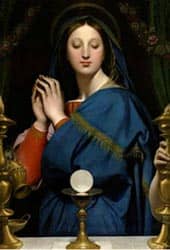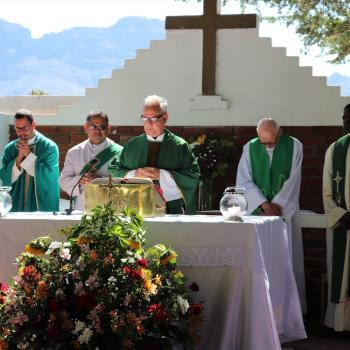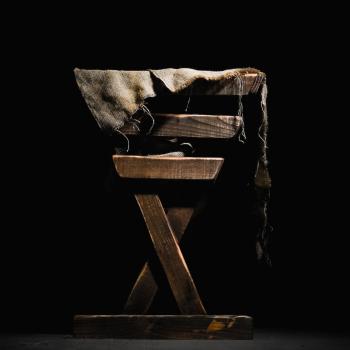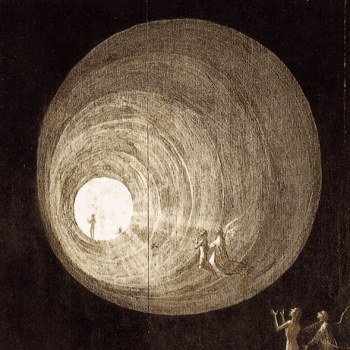Note: This article concludes a treatment of John Paul II's final encyclical on the Eucharist, Ecclesia de Eucharistia. Read Part One here.
 In the Eucharist we have Jesus. For Catholic Christians it is everything and all we need to successfully navigate our lives, and continue the work and mission of the Church. Through it we have access to the power of the Trinity.
In the Eucharist we have Jesus. For Catholic Christians it is everything and all we need to successfully navigate our lives, and continue the work and mission of the Church. Through it we have access to the power of the Trinity.
Every commitment to holiness, every activity aimed at carrying out the Church's mission, every work of pastoral planning, must draw the strength it needs from the Eucharistic mystery and in turn be directed to that mystery as its culmination. In the Eucharist we have Jesus, we have his redemptive sacrifice, we have his resurrection, we have the gift of the Holy Spirit, we have adoration, obedience and love of the Father. (Ecclesia de Eucharistia, par. 55)
What's more, in Mary, we have a Mother and a model of the Church who points the way, that these extraordinary notions may bear fruit in our lives. So says Blessed John Paul II in his final encyclical, Ecclesia de Eucharistia ("On the Eucharist in its Relationship to the Church"). More to the point, the late pontiff writes, "if we wish to rediscover in all its richness the profound relationship between the Church and the Eucharist," we ought to be enrolled "at the school of Mary, woman of the Eucharist."
While the Gospels make no reference to Mary being present at the Last Supper, the institution of the Eucharist, Mary was part of the early Christian Church that gathered after the Ascension awaiting the Holy Spirit at Pentecost.
Certainly Mary must have been present at the Eucharistic celebrations of the first generation of Christians, who were devoted to "the breaking of bread" (Acts 2:42).
But in addition to her sharing in the Eucharistic banquet, an indirect picture of Mary's relationship with the Eucharist can be had, beginning with her interior disposition. Mary is a "woman of the Eucharist" in her whole life. (Ecclesia de Eucharistia, par. 53)
One of the most quoted utterances of Mary is from the biblical account of Jesus' first miracle at the wedding at Cana. When it is apparent that the hosts are about to run out of wine, Mary nudges Jesus to take action. She also further nudges the wait staff in the direction of Jesus with the words, "Do whatever he tells you" (Jn. 2:5).
The rest of the story revolves around Jesus' miracle of changing water into the best wine the locals have ever tasted. As dramatic as that is, it is still not as amazing as Jesus' turning bread into his body, and his own blood into the New Wine of the Covenant at the Last Supper: "Do this in memory of me!"
John Paul points out Mary's Eucharistic faith—even before the institution of the Eucharist—in Cana. He also explains how it might apply to us today.
With the same maternal concern which she showed at the wedding feast of Cana, Mary seems to say to us: "Do not waver; trust in the words of my Son. If he was able to change water into wine, he can also turn bread and wine into his body and blood, and through this mystery bestow on believers the living memorial of his passover, thus becoming the 'bread of life'". (Ecclesia de Eucharistia, par. 54)
The Cana story, with its wine component, is instructive when it comes to linking Mary and the Eucharist. But John Paul doesn't stop there. He takes another biblical account and draws an earlier Eucharistic connection in Mary's life. He looks all the way back to the Annunciation where Mary "offered her virginal womb for the Incarnation of God's Word."





